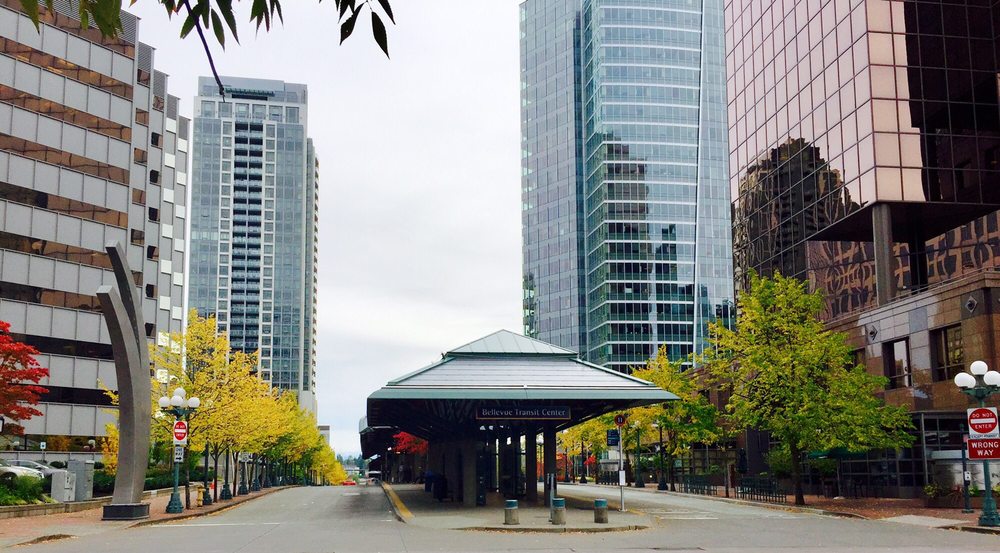Your Bellevue Transit Center Guide: Routes & Updates
This major transportation hub serves as a central point for bus and light rail services in the Eastside region of the Seattle metropolitan area. It facilitates connections between various local and regional transit lines, offering a vital link for commuters and residents. Its location in the heart of a bustling urban center enhances accessibility to employment, shopping, and recreational opportunities.
The facility's establishment has significantly improved regional mobility, reducing reliance on personal vehicles and contributing to decreased traffic congestion. It provides a convenient and efficient means of accessing key destinations within the city and beyond. The planning and development of this infrastructure demonstrate a commitment to sustainable transportation solutions and support future growth within the community.
The subsequent sections will delve into specific aspects of this pivotal location, including its operational capacity, future expansion plans, and impact on the surrounding urban environment. An examination of its architectural design and integration with local businesses will also be provided, offering a comprehensive overview of its role in the citys infrastructure.
- Joe Barry Net Worth Is He Really
- Emily Willis Net Worth Wiki Age Weight
- Debbie Cartisano Where Is Steve Cartisano S
- Where Is Ross Caruso Going After Leaving
- Butch Patrick Net Worth Celebrity Net Worth
Frequently Asked Questions
The following addresses common inquiries regarding the regional transportation facility.
Question 1: What transportation modes are accommodated at the facility?
The facility accommodates bus rapid transit, local bus routes, and light rail services. This allows for seamless transfers between various transit options.
- Fame Mark Belling Net Worth And Salary
- Xochitl Gomez Siblings Does She Have Any
- Apple Cofounder Steve Jobs Extreme Diet And
- What Is Mike Johnson S Net Worth
- Jim Caviezel Net Worth 2024
Question 2: What are the operating hours?
Operating hours vary depending on the specific transit route. However, the facility is typically operational from early morning until late evening to accommodate commute patterns.
Question 3: Is parking available for commuters?
Limited parking options may be available. Commuters are encouraged to utilize park-and-ride locations in surrounding areas and connect to the facility via transit.
Question 4: Are there amenities available for passengers?
Passenger amenities may include restrooms, waiting areas, and information kiosks. Specific amenities are subject to change based on operational needs.
Question 5: How does the facility contribute to regional accessibility?
The facility enhances regional accessibility by providing a central transfer point for various transit lines, connecting residential areas to employment centers and key destinations.
Question 6: What are the future development plans for the facility?
Future development plans may include expansion of services, enhanced passenger amenities, and improved integration with the surrounding urban environment. Specific plans are subject to ongoing review and funding availability.
In summary, this location is a vital component of the regional transportation network, offering various services and contributing to improved accessibility.
The subsequent section will explore the economic impact of this hub on the surrounding community.
Navigating Effectively
This section provides essential information for utilizing effectively, ensuring a smooth and efficient transit experience.
Tip 1: Plan Ahead. Prior to departure, consult the schedules for bus and light rail services. Real-time information is available through online resources and transit apps, facilitating accurate trip planning and minimizing potential delays.
Tip 2: Utilize Transit Apps. Mobile applications offer comprehensive information regarding arrival times, platform assignments, and service alerts. Leveraging these tools enhances awareness and allows for timely adjustments to travel plans.
Tip 3: Familiarize Yourself with Platform Locations. The physical layout can be complex. Reviewing maps and signage can aid in locating the correct platforms for connecting routes, particularly during peak hours.
Tip 4: Account for Transfer Times. Schedule sufficient time for transfers between buses and light rail. Unexpected delays may occur, and allocating a buffer minimizes the risk of missing connecting services.
Tip 5: Be Aware of Peak Hours. During morning and evening commute times, increased passenger volume may impact boarding procedures and seating availability. Adjust travel plans accordingly to avoid congestion.
Tip 6: Familiarize Yourself with Wayfinding Signage. Clear and concise signage is strategically positioned throughout the facility. Understanding these visual cues enhances navigation and minimizes confusion.
Tip 7: Stay Informed of Service Alerts. Regularly check for service alerts or disruptions that may impact transit routes. Official channels provide timely updates on unexpected changes or delays.
Effective use of this facility requires proactive planning and awareness of available resources. Adhering to these suggestions promotes a more efficient and predictable transit experience.
The concluding section will summarize the key features and long-term significance of this vital transit infrastructure.
Conclusion
This article has provided a detailed exploration of the Bellevue Transit Center, encompassing its operational function, passenger amenities, navigation strategies, and future development plans. It is evident that the facility serves as a critical node within the regional transportation network, facilitating connectivity and contributing to enhanced mobility for residents and commuters alike. The centers role in promoting sustainable transportation solutions and mitigating traffic congestion is demonstrably significant.
As the region continues to grow, the importance of the Bellevue Transit Center will only increase. Ongoing investment and strategic planning are essential to ensure that the facility remains a viable and effective component of the overall transportation infrastructure. Continued monitoring of its performance and responsiveness to evolving community needs are crucial to maximizing its long-term benefits.
- Sharon Case Net Worth Husband Married Children
- Denise Nicholas Age Bio Wiki Height Net
- Is Tyler Langford Based On A Real
- Who Is Corinna Kopf Biography Net Worth
- What Happened To Mike Zobel Wife And

Downtown Office Buildings And Bellevue Transit Center Bellevue

BELLEVUE TRANSIT CENTER Updated March 2024 41 Photos & 25 Reviews

Bellevue Transit Center 2019 All You Need to Know BEFORE You Go (with